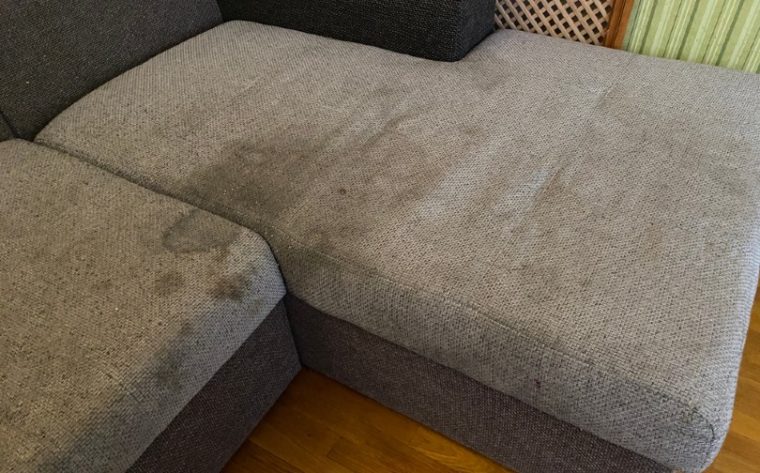
When you take on the responsibility of caring for a cat, you are signing up for many wonderful things. From affection and laughter to things being knocked off tables or counters, a whole range of experiences come with cat parenthood.
One of these less pleasant realities is that of cat vomit. Be it hairballs, an upset tummy, or something more serious—once you know the cat is ok, it’s time to deal with the mess or residual odor, which is usually less than nice.
Luckily, we’ve got several tried and true methods for getting that kitty-puke smell out of your furnishings so that the two of you can get back to relaxing. So, get those dish gloves on, and let’s get to work!
The 12 Tips to Get Cat Vomit Smell Out of Couches
Before you start, scroll to the bottom for our guide to reading upholstery cleaning tags. This will tell you which tips or ideas best suit your couch.
1. Open Up

The first thing you will want to do is open every window and door you can and get some air flowing through the space. Turn on any available fans, as well. Not only does it help minimize the odor, but it’s also a solid first step because the smell of cat vomit is often pungent. Take our word for it! You have some work to do, so preparing your environment is always wise.
2. Vinegar Solution
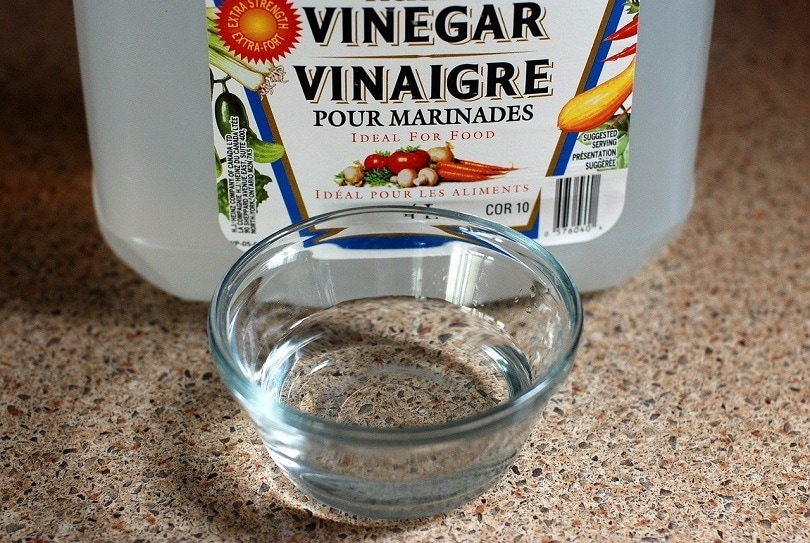
A great odor neutralizer that can quickly be made is a vinegar and water solution. We return to this quick, forgiving, and easy-to-make cleaner because it is made with only one ingredient, except water. Vinegar is commonly found around the house and isn’t expensive if you need to buy it.
Even if you don’t have enough vinegar to make up the 1:1 ratio that is generally recommended, you can still dilute it with good results. Alternatively, you can make it stronger by using more vinegar and less water. Simply soak, let sit from 20 minutes to an hour, and rinse.
3. Enzyme Cleaners

There are some great companies out there that use a natural biological process to manufacture a fantastic cleaning product. An enzyme cleaner is also usable on many materials. These formulas use enzymes to eat the stains on a microscopic scale and are very effective!
The directions vary slightly depending on the manufacturer and formula, but usually, it’s a matter of spraying, letting sit, and dry blotting the cleaner out. The smell will dissipate over the next 24–72 hours.
If you're trying to find an enzyme cleaner that does it all, we highly recommend our favorite cleaner, the Hepper Advanced Bio-Enzyme Pet Stain & Odor Eliminator Spray.
- ADVANCED ENZYMATIC CLEANER - Penetrates the most stubborn smells and stains at the deepest molecular...
- FOR ANY MESS, ON ANY SURFACE - This pet odor eliminator cleans your carpets, floors, furniture,...
- FRESH, NATURAL ODOR - Our unique formulation doesn't rely on dangerous or unpleasant chemical...
It permanently removes the very worst stains and smells you can imagine and makes clean up a breeze. There's even a 100% satisfaction guarantee! Click here to order a bottle today.
At Pet Keen, we’ve admired Hepper for many years, and decided to take a controlling ownership interest so that we could benefit from the outstanding products of this cool cat company!
4. Hydrogen Peroxide
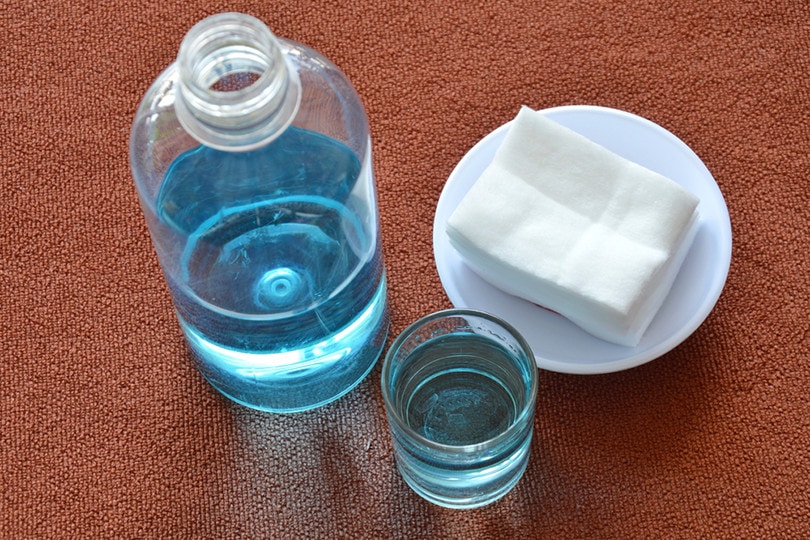
Another solution that can be made is hydrogen peroxide. Mix a ratio of 3 parts water to 1 part hydrogen peroxide and treat the affected area. Put a towel over the top of it. This is to prevent light from hitting it, which can cause the hydrogen peroxide to decompose too quickly. Let it sit like this for about half an hour, then blot it out, rinse with water, and dry it again.
Hydrogen peroxide is a little stronger than vinegar, and using too much can cause discoloration of your couch, so be careful with the ratio. It’s also strongly recommended that you first do a spot test in an inconspicuous area. That way, you will know beforehand if it will react badly or not. This should be attempted after the abovementioned methods—if they don’t do the trick first.
5. Water and Fabric Softener

Once the initial vomit stain is cleaned, there can still be some residual odors. The next couple of tips and ideas will help deal with freshening the couch’s fabric. First, try mixing a capful of fabric softener with about a bowl’s worth or a small pot of boiling water.
You can then let it cool a bit and use a sponge to dab the solution into the affected areas. This is generally known as a good trick for freshening up old upholstery and works well in the context of our needs.
6. Baking Soda

Another great way to deodorize your couch of residual cat vomit smell is to dump out some baking soda onto the affected area. All you need to do now is let it sit for at least an hour. Just like the odors in your fridge, baking soda is great for absorbing odors, which goes for couches, leather, and upholstery. Once you’ve given it enough time, just vacuum it up, and it should be substantially fresher, if not completely void of odor.
7. Coffee Grounds

If you don’t have any baking soda around, most people can find coffee grounds. If you don’t enjoy the smell of coffee, then this may not be a great choice for you, but it’s certainly not a problem at our house!
This will not be applied directly to the couch but rather used like an air deodorizer. Put some coffee grounds in some old pantyhose or cheesecloth and place it on the couch by the problem spot. The strong smell of the coffee simply overpowers the residual odors while they dissipate.
8. Steam Cleaner With Upholstery Attachment
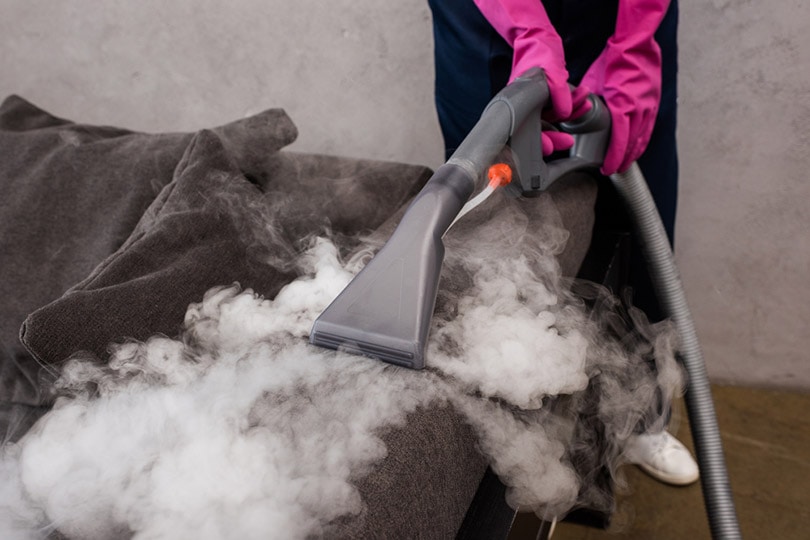
Having your cat vomit on your couch is one thing. Having your cat vomit on a couch and not discovering it for a week or two or longer brings a whole new set of challenges. When you’ve got a vomit stain with enough time to bake into the fabric, it’s much more difficult to remove.
That’s when we pull out the big guns. Rent a steam cleaner with an upholstery attachment and get the pet-specific enzyme cleaner compatible with it. It’s a couple of extra bucks, but it’s cheaper than buying a new couch! We’ll let the instructions with the machine take it from here.
9. Wet Vacuum
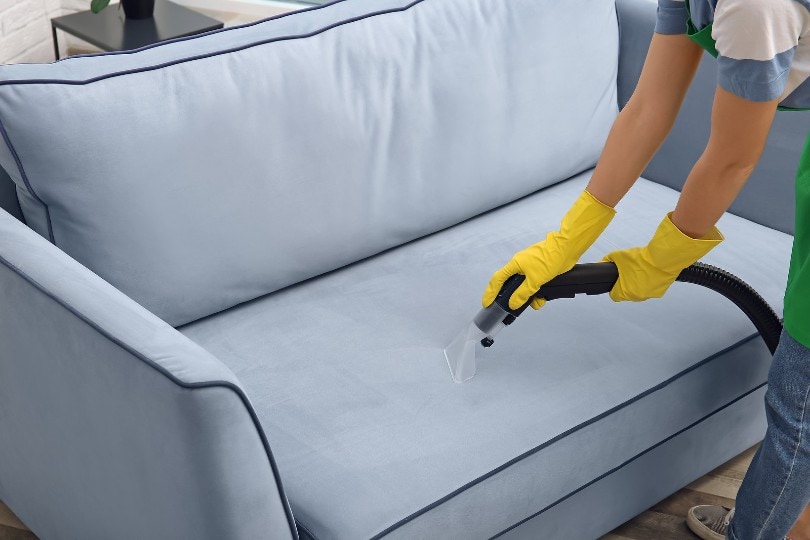
Sometimes renting a steam cleaner is not feasible—we get it. A good workaround for this problem is a wet vacuum. Most shop-vacs are able to vacuum water and are made for cleaning up this kind of thing. Even if you don’t have one immediately available, most people know somebody who does. So, if you’ve got a tough stain and want to save your couch, reaching out could be the difference between a cleaning project and a new couch!
10. Sunlight

If the weather allows, sunlight is a great final deodorizer. Put your cushions on a clean blanket in the yard or down on the patio, and let nature dry them out. The UV rays from the sun will help to break down any little microbes that may cause the odor to stick around after cleaning. It seems like the most effective strategies use nature to their advantage.
11. Pumice Stone

Sometimes, getting the odor and stain out on certain materials is easy, but the furs that may have come from the mess can get lodged in. So, here is a trick for getting all those tiny, decomposed hairs out of your microfiber and related materials.
A pumice stone—like the kind that you use to remove dead skin is fantastic for removing hairs from dense fabrics. It’s also great for getting hairs out of your car interior that don’t come out with vacuuming!
12. Air Freshener

Yep, just your good old-fashioned, run-of-the-mill aerosol air freshener. This last step is a finishing touch—make your home smell nice again, the way you like it! It doesn’t need to be an aerosol air freshener either—if you prefer to burn incense or smudge, maybe light a scented candle—by all means! It’s yours. Take it back the way you see fit.
Tips for Cleaning Cat Vomit Smell From Upholstery
Most upholstery comes with a tag on it and a letter or letters that indicate how it should be cleaned. Always be sure to check this tag to make sure that any of the methods you are using won’t damage your couch. Here is a quick guide to upholstery cleaning tags.
| W | Use only water-based cleaners, and do not over-wet or use solvent-based cleaners (like hydrogen peroxide) |
| S | Do not use water or water-based cleaners to clean this. Usually requires specialized cleaners. |
| SW or WS | Spot clean with mild cleaners only. |
| X | Vacuum or brush clean only. Do not use any cleaners, be they water or solvent-based. |
Conclusion
Hairballs happen. Cats get sick, and it’s never a good time. We hope your little buddy is doing alright and that our tips and tricks will help get you to a place where you can say, “No harm, no foul.” It’s certainly a lot easier to get there when the foul odors have been taken care of. We wish you the best of luck with both your cat and your couch. Until next time—take care!
- Related Read: How to Get Cat Vomit Out of Clothes (3 Ideas and Tips)
Featured Image Credit: YanGoPo, Shutterstock








